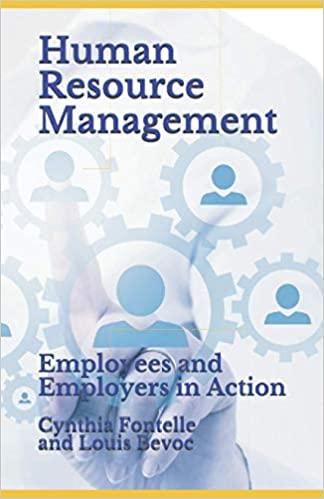Answered step by step
Verified Expert Solution
Question
1 Approved Answer
perations: Post - secondary ' textbooks were inserted by their owners into dropboxes or given to student representatives through student - club textbook - collection
perations: Postsecondary textbooks were inserted by their owners into dropboxes or given to student representatives through studentclub textbookcollection drives on behalf of TC Canada's academic school year ran primarily from September to April, so the majority of textbooks were collected in April. The textbooks were collected and transported to TC headquarters at a cost of deg per kilometre and $ per hour for the drivers' wages. Six hundred books could be shipped in a single shipment, although the average shipment consisted of only books. Drivers were located in Hamilton and were compensated for the round trip from the collection school to headquarters, as well as for one hour of time at the collection school. After reaching Cs warehouse, the books were sorted by warehouse workers. Warehouse workers were paid $ per hour, and they scanned, sorted, shelved, and tracked books in an hour. Twentyfive per cent of the textbooks collected were sorted for listing on Amazon; half of those books listed had been sold at an average price of $ After a period of time, any listed unsold books were deemed unsalable and were then donated to schools in East Africa. Fifty per cent of the textbooks collected were immediately categorized for donation to East Africa. Donated textbooks were shipped to East Africa once books deemed appropriate for donation had been collected. Shipping costs fluctuated widely due to a variety of factors eg distance from the East African coast and the number of border crossings required and averaged $ per shipment. The remaining per cent of books collected were too out of date to sell online or to donate, so they were recycled. Since textbooks were difficult to recycle responsibly, all textbook recycling was done through an ecoreliable partner in the United States at a recycling cost of $including transportation for every textbooks. Management Team TC had five members on its management team, including Janssen and Hartford, who assumed corporate financial officer roles. These members were employed full time by TC All were recent graduates of Western University, McMaster University, or Wilfrid Laurier University. All five management team members had travelled to Africa to witness TCs impact on the postsecondary education system, and to learn how they could maximize their contributions on behalf of TC
Outcomes As of May TC had donated books to East African universities, provided $ in micro loans, donated $ to Canadian nonprofits, and reused or recycled textbooks. In the postsecondary academic year, books had been collected. Janssen was proud of the contribution his team was making to their local and global communities, trut he was eager to further that impact through more growth and expansion. TC paid one student ambassador at each school an annual salary of up to $ Any expansion to a new location would follow the same collection process, and textbook collections would be similarly shipped to TCs warehouse. The campus community manager would work full time and earn an annual salary of $ Seventyfive per cent of the manager's time would be spent on managing the eastern expansion, and per cent would be spent on managing existing dropbox locations where TC presence was lacking. Janssen expected that historical proportions of textbooks sold, donated, and recycled would be the same for all new locations. An expansion would be considered successful if TC could break even and increase its exposure and book donations; however, Janssen and Hartford would consider an expansion a financial success if TC could earn a per cent profit. TCs new warehouse would have the capacity to sort and store textbooks from all three proposed universities. However, Hartford was concerned about potential roadblocks to transporting textbooks from the collection universities to TCs warehouse. The textbooks would need to be stored at the collection universities until enough books had been collected to warrant the driver's pickup time. If pickups took longer than anticipated, the driver might need to stay overnight in the region due to regulatory requirements. Hartford was unsure how this constraint would affect the financial feasibility of the expansion, so he wanted to ensure that any expansion that TC pursued would have a healthy margin of safety.
For Queens university: books could be collected. for Carlton and for Uottawa. Is the following variable or fixed cost if variable, give me the cost per unit and if fixed what is the cost : Transportation costs
Driver labour costs
Sorting labour costs
Recycling costs
Shipping to Africa costs
Campus ambassador salary
Campus community management salary related to the expansion also Calculate how many textbooks TC would need to collect to break even at each university
Step by Step Solution
There are 3 Steps involved in it
Step: 1

Get Instant Access to Expert-Tailored Solutions
See step-by-step solutions with expert insights and AI powered tools for academic success
Step: 2

Step: 3

Ace Your Homework with AI
Get the answers you need in no time with our AI-driven, step-by-step assistance
Get Started


